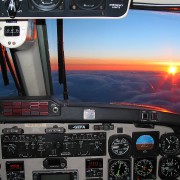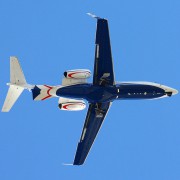Less loss of control in flight (LOC-I) accidents with more AOA indicators ?
In this recent article published on the Pilot Training System website, the author Roger Rapoport quotes the US National Transportation Safety Board (NTSB) member Earl Weener as making a powerful case for adding angle of attack indicators to all aircraft.
Long advocated by many commercial pilots, and strongly recommended by the French BEA team investigating the Air France 447 accident, AOA indicators help avoid cockpit confusion that can contribute to an aerodynamic stall.
According to Weener, “more than 40 percent of fixed wing accidents are loss of control events”. Loss of control accidents are the top general aviation item on the NTSB’s “most wanted list” for transportation safety improvements. Often they are triggered by several errors including bad turns on final approach, failure to recognize the warning signs of an impending stall and not knowing how to apply appropriate recovery techniques.
Weener points out that an AOA indicator can improve situational awareness during critical and high-workload phases of flight. “With an AOA indicator,” says Weener, “a significant portion of these loss of control events could be prevented.”
From our point of view at ECAIR, we fully support such an initiative as for us, using the AOA indicator is paramount in terms of preventing Upset situations or LOC-I. AOA indicators could highly improve pilots’ situational awareness to avoid exceeding the critical AOA and thus reduce the risk of an inadvertent stall.
If you ask military pilots which instrument they will prefer to exclusively use in terms of energy management and SA regarding safety speed margins, their unanimous answer will be “the AOA indicator“…
AOA indicators have already been installed on many Transport & Business Aircraft such as KC 135, Transall, Canadair, Tracker and Hawker 900. The FAA has concluded that the use of AOA-based systems by the GA community is an effective method for reducing LOC accidents in the approach and landing phase of flight. We think it should be mandatory for all training aircraft.





